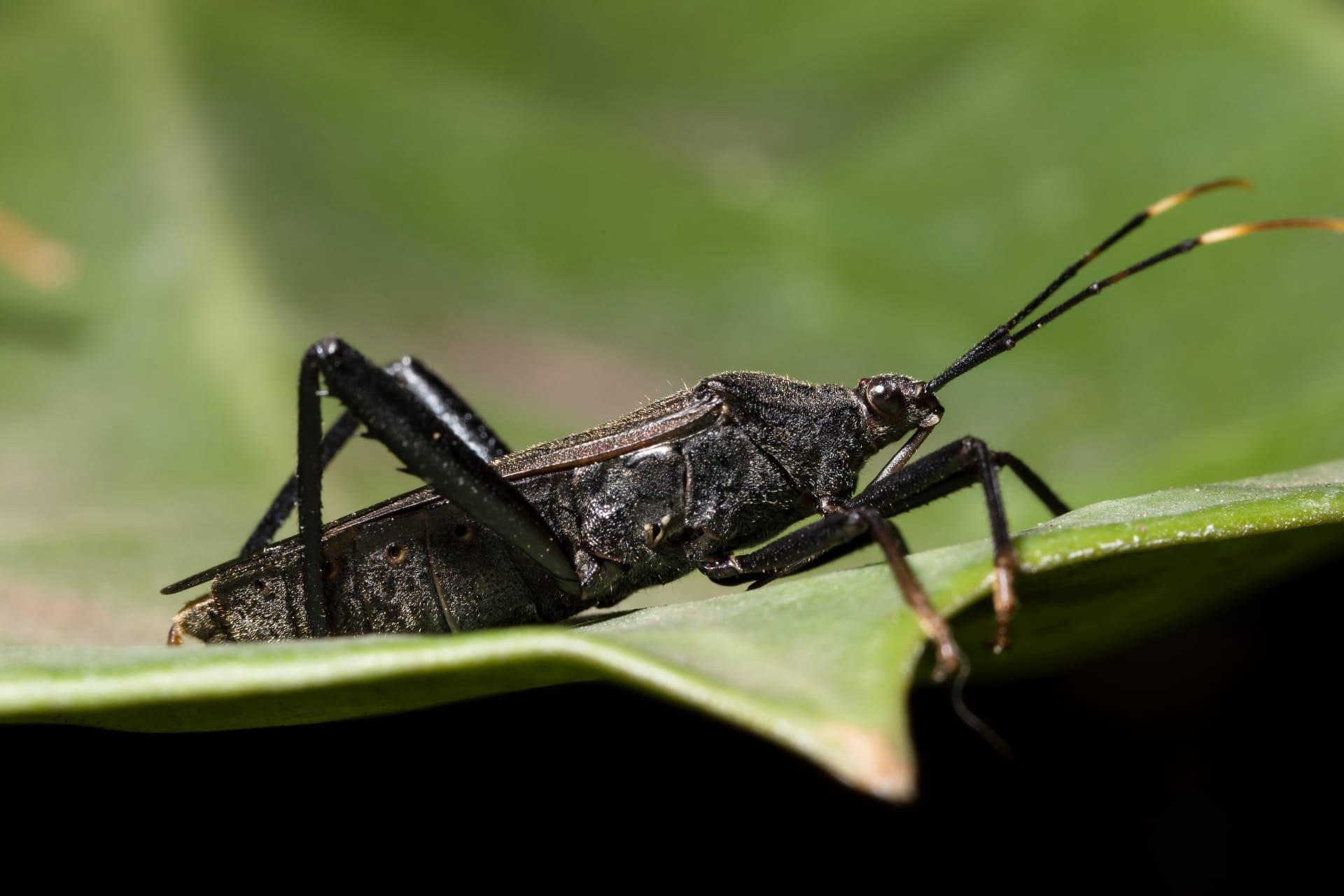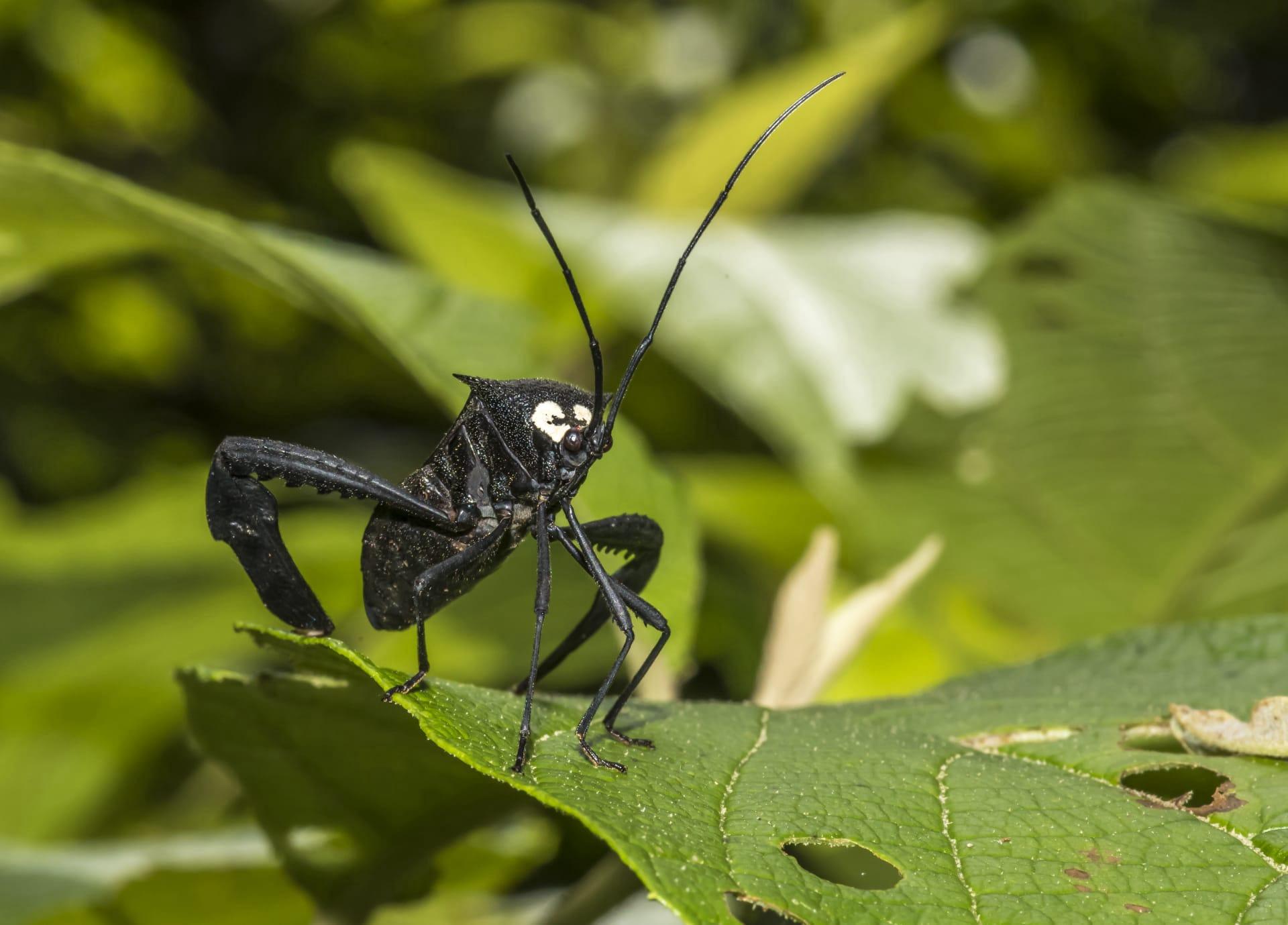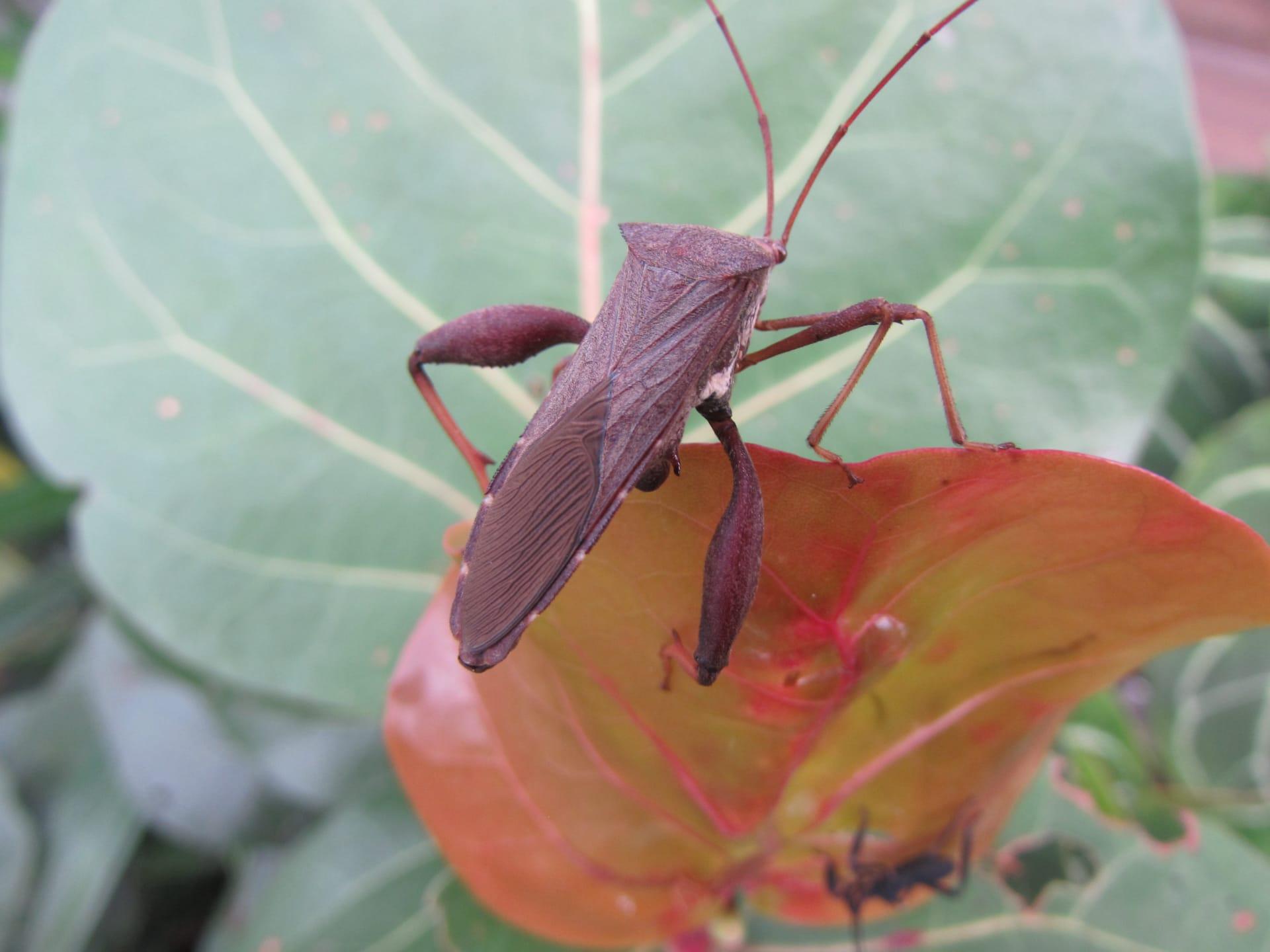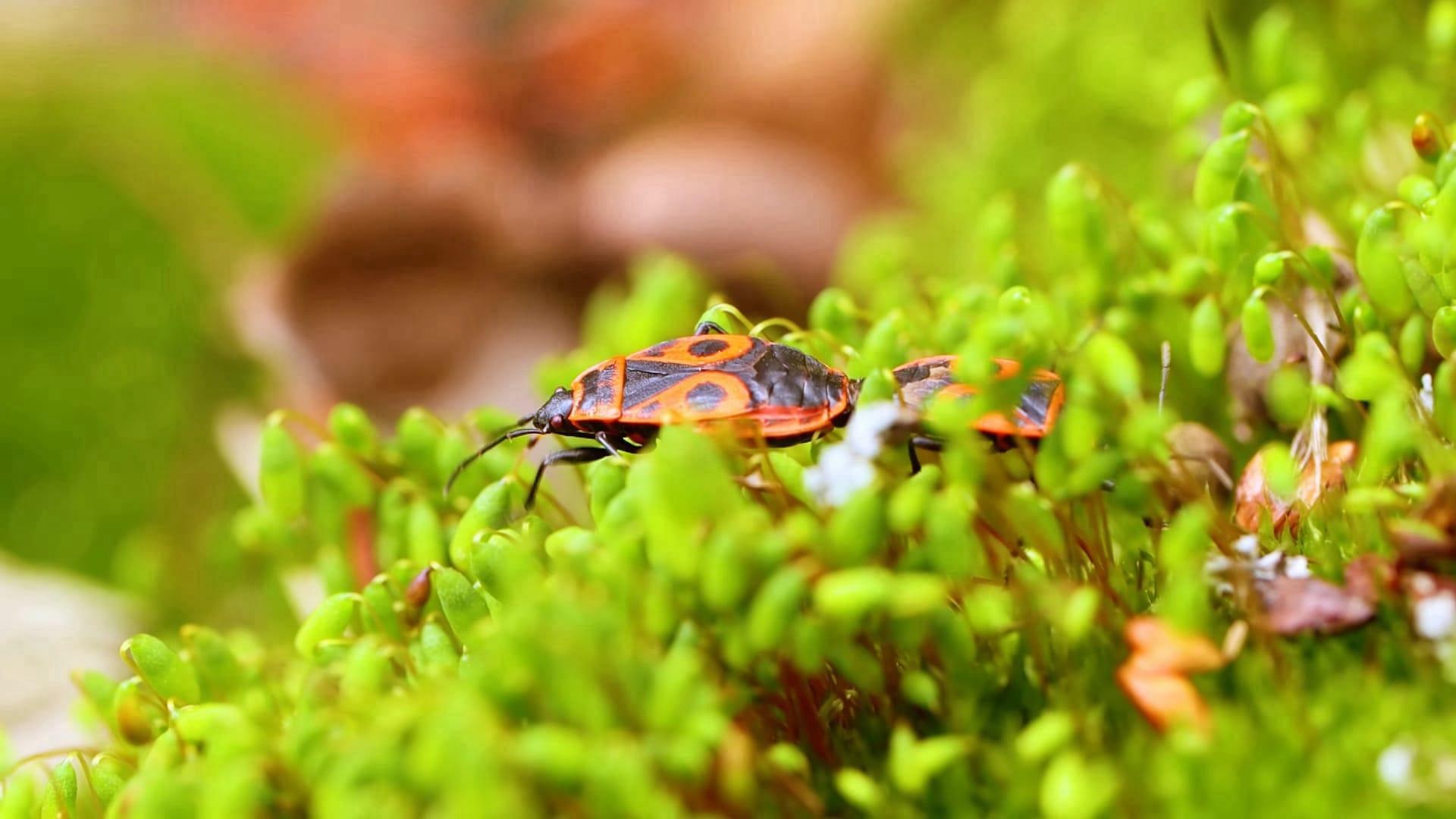1
Assassin beetles, known for their predatory nature, are distinguished by their elongated heads and powerful, curved mandibles. These mandibles are not just for show; they are incredibly strong and efficient for their size, measuring up to a quarter of an inch in length. This may not sound large, but in the beetle world, it's like wielding a pair of oversized scissors. These mandibles are used to snatch up prey, often other insects, with a swift, decisive movement. Their hunting prowess is further enhanced by their stealthy approach, allowing them to ambush unsuspecting victims.
Another intriguing aspect of assassin beetles is their life cycle, particularly their larval stage. Assassin beetle larvae are known for their unique hunting strategy. They cover themselves with debris, including the remains of their prey, to create a camouflaging layer. This disguise serves a dual purpose: it helps them to ambush prey and also to protect themselves from predators. Remarkably, these larvae can carry debris piles that are several times their own body weight, showcasing not just cunning but also surprising strength for their diminutive size.

2
The world of assassin beetles is not just about hunting; it's also about romance, with a twist. Male assassin beetles are known to offer nuptial gifts to females during courtship. These gifts are usually prey items, such as smaller insects. What makes this interesting is the way these gifts are presented. Males carefully wrap their gifts in silk produced by their own bodies, creating a presentable package to entice the females. This behavior is not just about generosity; it's a critical part of their mating ritual, as females often choose mates based on the quality of the gift they receive.
Assassin beetles also exhibit a fascinating behavior known as "thanatosis," which is essentially playing dead. When threatened, these beetles can convincingly play dead to avoid predation. They fold their legs, drop to the ground, and remain motionless, sometimes for several minutes. This act of playing dead is so convincing that predators often lose interest, thinking the beetle is not a viable meal. This survival tactic showcases the beetle's ability to adapt and survive in a world full of predators.

3
Did you know that assassin beetles are also nature's pest controllers? Many species of these beetles are specialized in hunting pests that damage crops and gardens. For instance, some species primarily feed on aphids, tiny insects notorious for damaging plants by sucking out their sap. By controlling the population of such pests, assassin beetles play a vital role in maintaining the health of various ecosystems. Their presence in gardens and farms is often welcomed by gardeners and farmers who appreciate their contribution to natural pest control.
Another interesting fact about assassin beetles is their method of digestion. These beetles have a somewhat gruesome but efficient way of feeding. Once they capture their prey with their powerful mandibles, they inject enzymes into the body of the victim. These enzymes rapidly break down the internal tissues, turning them into a liquid form. The beetle then sucks out the liquefied contents, essentially drinking their meal. This method of external digestion allows them to consume prey much larger than themselves, showcasing their efficiency as predators.

4
Assassin beetles are not just solitary hunters; they exhibit social behavior, especially when it comes to raising their young. In some species, the females lay their eggs in safe, hidden locations and then guard them vigilantly. This maternal care is relatively rare among beetles and indicates a higher level of social behavior and investment in offspring survival. The female will often stay with the eggs until they hatch, protecting them from potential predators and harsh environmental conditions. This dedication showcases a fascinating aspect of their life cycle that contrasts with their fierce hunting persona.
The diversity of assassin beetles is another remarkable fact. There are over 7,000 known species of assassin beetles worldwide, found in various habitats from tropical rainforests to arid deserts. This diversity is not just in numbers but also in appearance and behavior. Some species mimic ants to infiltrate and hunt within ant colonies, while others have bright, warning colorations. This vast array of species highlights the adaptability and evolutionary success of assassin beetles in different environments, making them a fascinating group for entomologists and nature enthusiasts alike.

5
Assassin beetles have a unique defense mechanism against larger predators: they can emit a noxious chemical. When threatened, some species can release a potent substance from their abdomen, which is irritating to predators and can deter attacks. This chemical defense is particularly effective against birds and small mammals, providing the beetle with a critical survival advantage. The ability to produce such a chemical is a testament to their adaptability and resilience in the face of danger.
The role of assassin beetles in folklore and culture is quite interesting. In some cultures, these beetles are seen as symbols of strength and cunning due to their predatory nature. They are often used in traditional stories and myths to represent characters that are smart, sneaky, and powerful. In addition to their cultural significance, assassin beetles have also piqued the interest of the scientific community for their potential in biological pest control. Their natural predatory habits make them valuable allies in controlling pest populations in a sustainable and environmentally friendly way.